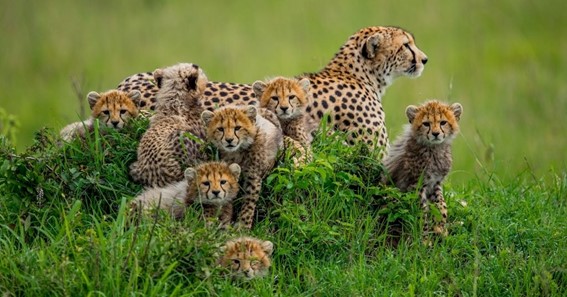Are you curious to know what is biotic resource? You have come to the right place as I am going to tell you everything about biotic resource in a very simple explanation. Without further discussion let’s begin to know what is biotic resource?
The Earth’s natural resources are the foundation of human civilization, providing us with everything from food and shelter to energy and medicine. Among these resources are biotic resources, which are derived from living organisms and play a vital role in sustaining life on our planet. In this blog, we will explore the concept of biotic resources, their significance, and the importance of responsible stewardship to ensure their long-term viability.
What Is Biotic Resource?
Biotic resources, also known as living resources, are derived from living organisms or their interactions with the environment. These resources include both flora (plants) and fauna (animals), as well as the products and byproducts derived from them. Biotic resources encompass a wide range of elements that directly impact our daily lives, including food, timber, medicine, textiles, and much more.
Types Of Biotic Resources
- Agricultural Resources: The most fundamental biotic resource, agriculture, provides the world’s population with essential food crops, such as grains, fruits, vegetables, and livestock for meat and dairy products.
- Medicinal Resources: Many plant and animal species contain valuable compounds used in traditional and modern medicine. These resources are vital for developing pharmaceuticals and treating various ailments.
- Forestry Resources: Trees and other plants provide timber, paper, and other wood-based products used in construction, furniture, and countless other applications.
- Floral and Faunal Diversity: Biotic resources encompass the immense diversity of flora and fauna that contribute to ecosystem stability, biodiversity, and ecological balance.
Sustainable Management And Conservation
The preservation and responsible management of biotic resources are essential to ensure their availability for future generations. Sustainable practices focus on:
- Biodiversity Conservation: Protecting and preserving the diverse array of plant and animal species is crucial for maintaining ecosystem health and resilience.
- Responsible Harvesting: Adopting sustainable harvesting techniques for plants and animals ensures that resource extraction does not exceed natural regeneration rates.
- Protecting Ecosystems: Preserving natural habitats, such as rainforests, wetlands, and coral reefs, safeguards biotic resources and the ecological services they provide.
- Promoting Reforestation: Planting new trees and restoring degraded ecosystems help maintain forestry resources and contribute to carbon sequestration.
Challenges And Threats
Biotic resources face several challenges and threats to their sustainability:
- Overexploitation: Unsustainable practices, such as overfishing, illegal logging, and poaching, can deplete biotic resources faster than they can replenish.
- Habitat Loss: Deforestation, urbanization, and land conversion pose significant threats to natural habitats and the species that depend on them.
- Climate Change: Altered climatic conditions impact the distribution and survival of many plant and animal species, affecting their abundance and availability as resources.
- Invasive Species: The introduction of invasive species disrupts ecosystems and threatens native flora and fauna.
Conclusion
Biotic resources are an integral part of our lives, supporting our survival and enriching our existence in numerous ways. As stewards of the Earth, it is our responsibility to protect and conserve these invaluable resources for future generations. Embracing sustainable practices, promoting biodiversity conservation, and raising awareness about the significance of biotic resources are essential steps towards ensuring a harmonious relationship between humans and nature. By valuing and nurturing the bounty of our living resources, we can create a more sustainable and equitable future for all life on Earth.
FAQ
What Is Biotic Resources Answer?
Biotic resources comprises all the living organisms from animals to humans. Examples of biotic resources are forests, animals, birds, fish, and marine organisms.
What Are Called Abiotic Resources?
Abiotic resources refer to the resources that make up non-living entities. Minerals, rocks, and other abiotic resources are examples.
What Is Biotic With Example?
A biotic factor is a living organism that shapes its environment. In a freshwater ecosystem, examples might include aquatic plants, fish, amphibians, and algae.
What Are Abiotic And Biotic Resources With Examples?
Biotic Resources – All living organisms in our environment are called biotic resources. For example trees animals insects etc. Abiotic Resources – All non-living things present in our environment are termed as abiotic resources. For example – earth air water metals rocks etc.
I Have Covered All The Following Queries And Topics In The Above Article
What Is A Biotic Resource
What Is Biotic And Abiotic Resource
What Is The Difference Between Biotic And Abiotic Resource
What Of The Following Is Not A Biotic Resource
What Is Abiotic Resources
What Are The Biotic And Abiotic Resources
What Are The Biotic And Abiotic Resources Give Some Examples
What Are Biotic And Abiotic Resources Class 10
What Is Abiotic Resources Class 10
Examples Of Abiotic Resources
What Is Abiotic Resources Class 8
Biotic Resources In Geography
What Is Biotic Resource
